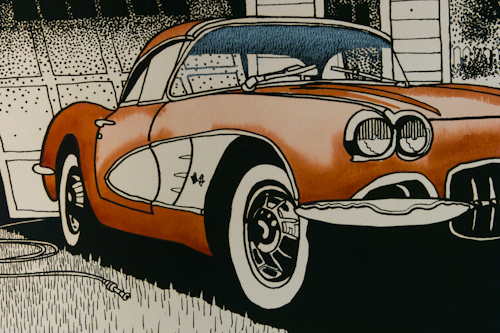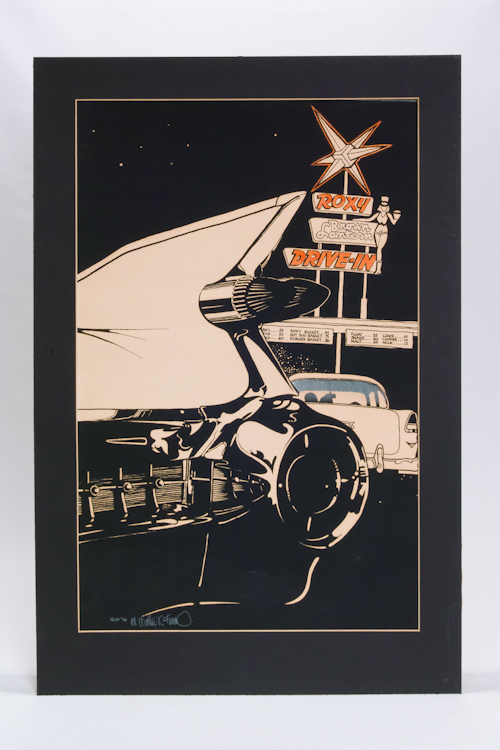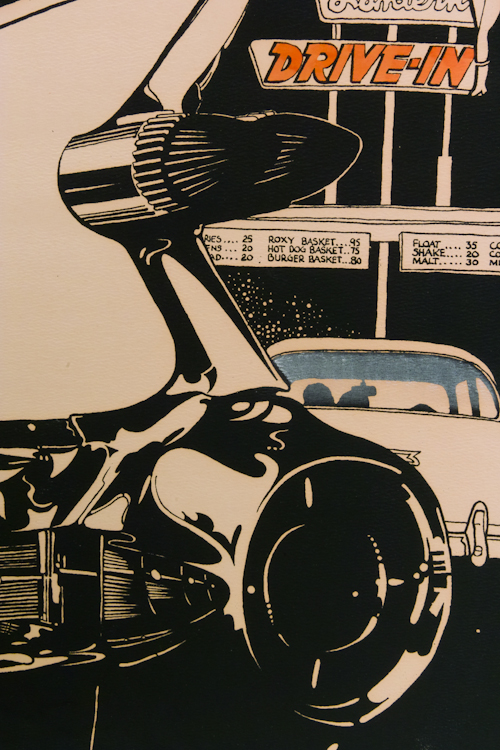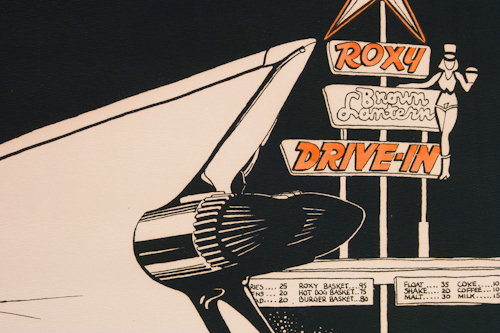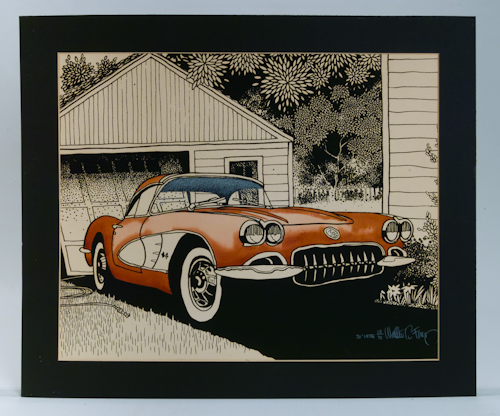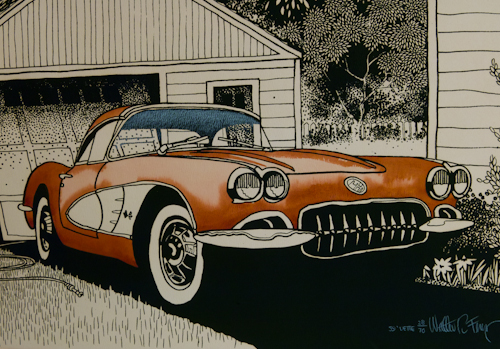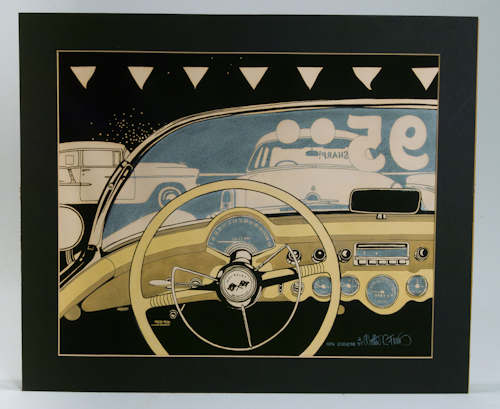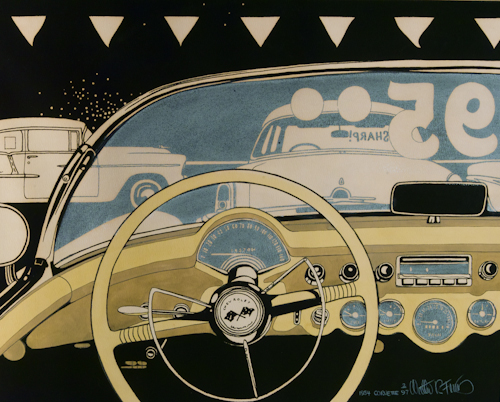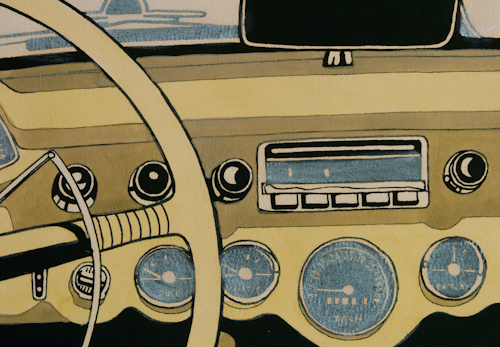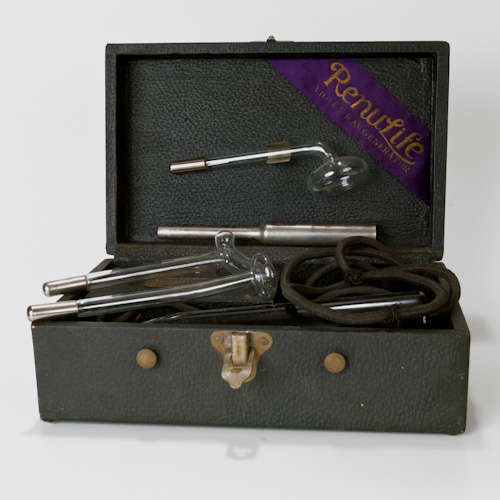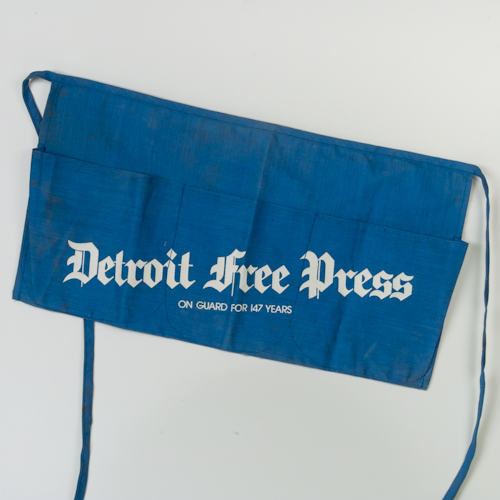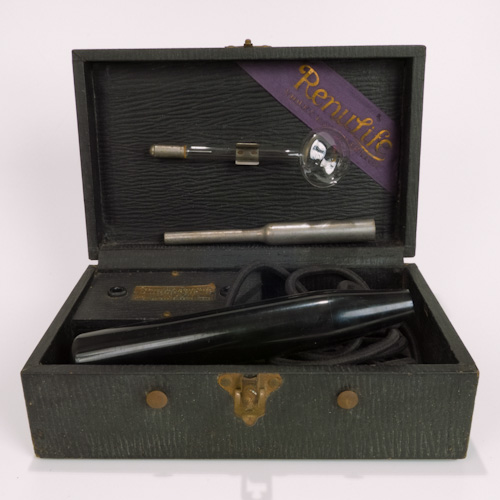This graphic interpretation of a quintessential shark fin and dual bullet tail light of a ’59 Cadillac captures the essence of this classic GM design. The refined lines of the Caddy are juxtaposed with a cozy couple in their Chevy at the Roxy Brown Lantern Drive-In. W.R. (Rocky) Ferris celebrates his early talent and passion in this screen printed image, number 25 or 58, printed in 1978, with applied water color, and white Conte’ crayon.
This idyllic image is titled “59 Vette.” It is a W.R. Ferris screen printed image, number 28 of 70, with applied water color, and white Conte’ crayon. It depicts a scene common to many households, particularly during those “lazy, hazy, crazy days of summer.” We washed and waxed the car by hand, of course, collectors still eschew any other methods. My fourth grade teacher had a ’59 Corvette just like this, a gift from her father upon her graduation from college. The details of the checkered flag are even noted in this nostalgic, photorealistic homage to the past and the car of your dreams.
This image is titled “1954 Corvette.” It is a screen printed image, number 2 of 97, with applied water color, and white Conte’ crayon. It depicts a view from the buyer’s perspective of the steering wheel, dashboard, and surrounding cars on a car lot. The artist attends with passion, graphically, to the infinite details of the industrial design including the speedometer, the tachometer, oil pressure gauge, … A ‘ vette enthusiast will feel like they are in the driver’s seat.
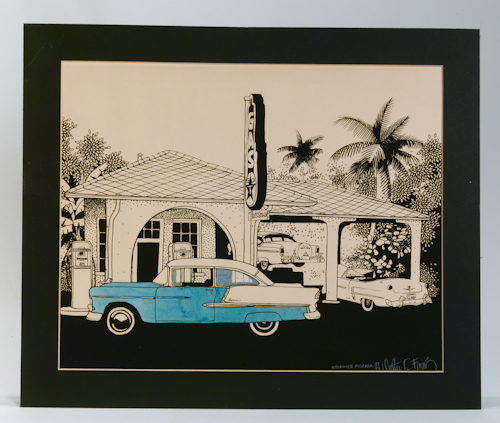
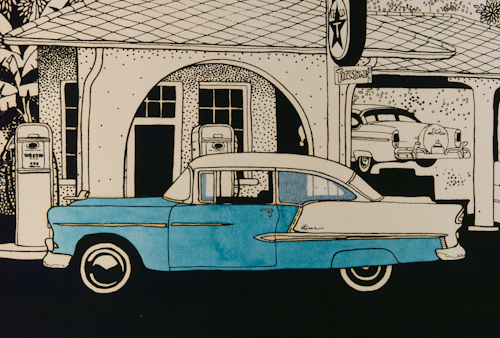
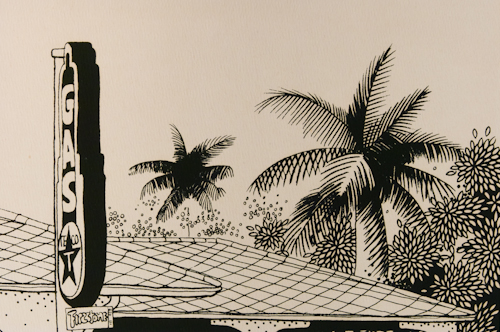
Back in the day, fuel stations dispensed not only gasoline but service “with a smile.” Gasoline, including Texaco, at this service station was pumped, oil levels were checked, windshields were wiped, self-service was not even a concept in consideration. The artist who at the time spent winters in Marathon, Florida, illustrated this open bay garage located in Kissimmee. The perfect backdrop for a period film shoot. The details in both the classic vintage cars, as well as the scenic landscape are fine examples of photorealistic style. The image is not dated formally, however, if one looks closely, the artist uses the date of completion in the license plate: 31678. It is a W.R. (Rocky) Ferris screen printed image, from 1978, number 27 of 53, with applied water color, and white Conte’ crayon.
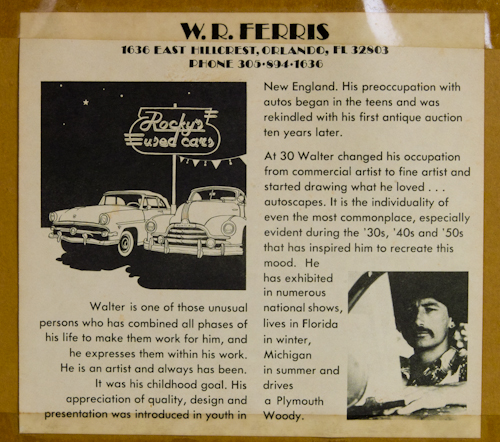
This and three other hand tinted prints by Walter Rockford Ferris, aka Rocky Ferris, were purchased in the summer of 1978 at the Ann Arbor, Michigan Arts Festival. They have been displayed in one residence or another in the family since that time. We disassembled this and the other pieces to clean, photograph, and replace the acid free backer, prior to listing in its original metal, period 70s frame.
“Walter is one of those unusual person who has combined all phases of his life to make them work for him and he expresses them within his work. He is an artist and always has been.
It was his childhood goal. His appreciation for quality, design, and presentation was introduced in his youth in New England. His preoccupation with autos began in his teens and was rekindled with his first antique auction ten years later. At 30, Walter changed his occupation from commercial artists to fine artist and started drawing what he loved… autoscapes.
It is the individuality of the most commonplace, especially during the 30s, 40s, 50s, that has inspired him to recreate this mood. He has exhibited in numerous national shows, lives in Florida in winter, Michigan in summer, and drives a Plymouth Woody.”
His work is in private, corporate, and public collections. He has received numerous commissions, and prestigious awards at art festivals.
His individual style has evolved over the years he describes as “many lives.” Living on a boat and creating miniatures for years, then back on land with a studio, he describes his work as “Tropical Surrealism.” He no longer paints simply photorealistic images, he makes “the normal seem abnormal and abnormal seem normal… surrealism.” A member and an instructor at the Key West Art Center, Key West, Florida, as of 2006. Discovered through numerous sites and links, he may be quoted as stating that “photorealistic images of which are not real or present and come from my mind are what make me feel truly creative.”
